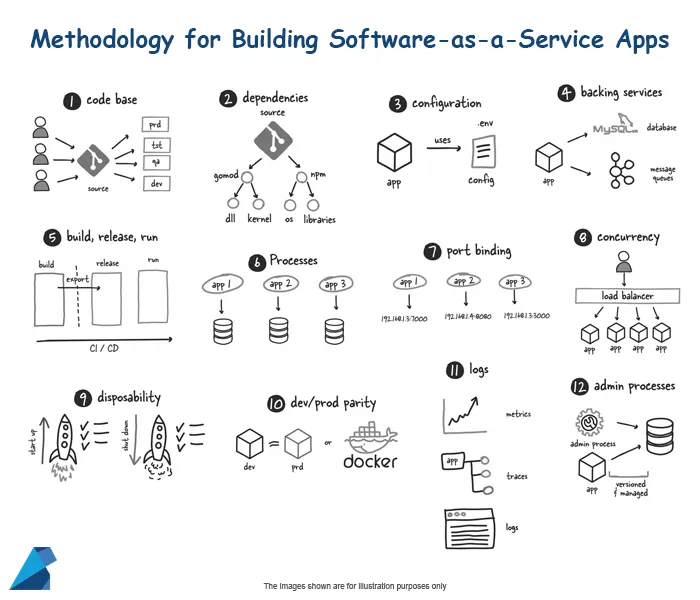
The Rise of Containerization
In the ever-evolving world of technology, the landscape of infrastructure management has undergone a significant transformation. The traditional approach of virtualization, where physical servers are divided into multiple virtual machines (VMs), has been increasingly challenged by the emergence of containerization. Containerization, exemplified by technologies like Docker, offers a new and more efficient way of deploying and managing applications, revolutionizing the way we think about modern infrastructure.
Understanding the Difference: Virtualization vs. Containerization
To fully appreciate the advantages of containerization, it is essential to understand the key differences between virtualization and containerization. In a virtualized environment, a physical server is abstracted into multiple virtual machines, each with its own operating system. This approach allows for better resource utilization and the ability to run different operating systems on the same physical hardware. However, the process of booting up a virtual machine and its operating system can be time-consuming and resource-intensive.
Containerization, on the other hand, takes a different approach. Instead of creating separate virtual machines, containerization abstracts the operating system layer, allowing applications and their dependencies to be packaged into lightweight, self-contained units called containers. These containers can be easily deployed, scaled, and managed, without the need for a full-fledged operating system for each application.
The Benefits of Containerization
Speed and Efficiency
One of the primary advantages of containerization is its speed and efficiency. Containers can be spun up and down quickly, as they do not require the overhead of booting an entire operating system. This makes the deployment and scaling of applications much faster and more efficient, enabling developers to iterate and deploy their code more rapidly.
Resource Utilization
Containerization also offers improved resource utilization. Unlike virtual machines, which are limited to the resources allocated to them, containers can dynamically access and utilize the full resources of the host operating system. This means that containers can scale up or down as needed, ensuring optimal resource utilization and reducing the risk of over-provisioning or under-utilization.
Isolation and Portability
Containerization provides a high degree of isolation, ensuring that each application runs in its own self-contained environment. This isolation helps to prevent conflicts between dependencies, libraries, and other components, making it easier to manage and maintain applications. Additionally, containers are highly portable, as they can be easily moved between different environments, from development to production, without the need for complex configuration changes.
Scalability and Flexibility
Containerization offers unparalleled scalability and flexibility. With the ability to quickly spin up or down instances of containers, applications can be easily scaled to meet changing demands. This scalability, combined with the portability of containers, makes it easier to deploy and manage applications across different environments, from on-premises servers to cloud-based infrastructure.
Containerization in Action: Docker and Kubernetes
The rise of containerization has given birth to several powerful technologies, two of which are Docker and Kubernetes. Docker is a popular container runtime that simplifies the process of building, packaging, and deploying applications as containers. Kubernetes, on the other hand, is a container orchestration platform that helps manage and scale containerized applications across multiple hosts, providing advanced features like load balancing, service discovery, and self-healing.
Together, Docker and Kubernetes have become the de facto standard for modern infrastructure management, enabling organizations to streamline their application deployment, scaling, and management processes. By leveraging the power of containerization, these technologies have revolutionized the way we think about infrastructure, paving the way for a more agile, scalable, and efficient future.
The Future of Modern Infrastructure
As the demand for faster, more efficient, and more scalable infrastructure continues to grow, the importance of containerization cannot be overstated. Containerization, with its ability to abstract the operating system layer and provide a highly portable and scalable environment, is poised to become the foundation of modern infrastructure. By embracing containerization, organizations can unlock new levels of agility, efficiency, and innovation, positioning themselves for success in the ever-evolving digital landscape.
“The future of modern infrastructure lies in the power of containerization, where applications and their dependencies are packaged into lightweight, self-contained units that can be easily deployed, scaled, and managed across diverse environments.”
As we look ahead, the continued advancements in containerization technologies, coupled with the growing adoption of cloud-native architectures and DevOps practices, will undoubtedly shape the future of modern infrastructure. By embracing this transformative shift, organizations can unlock new opportunities for growth, innovation, and competitive advantage, positioning themselves for success in the digital age.




